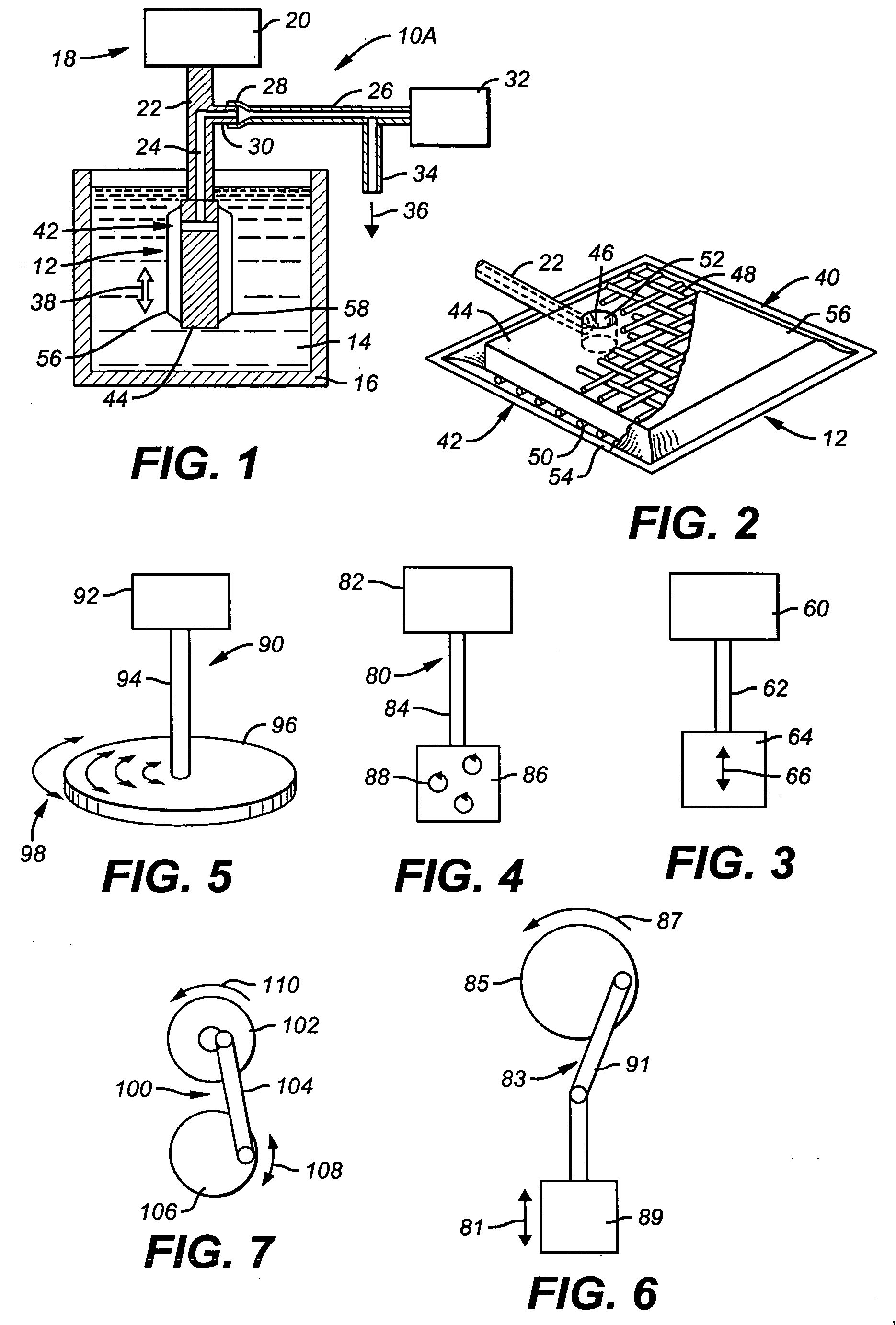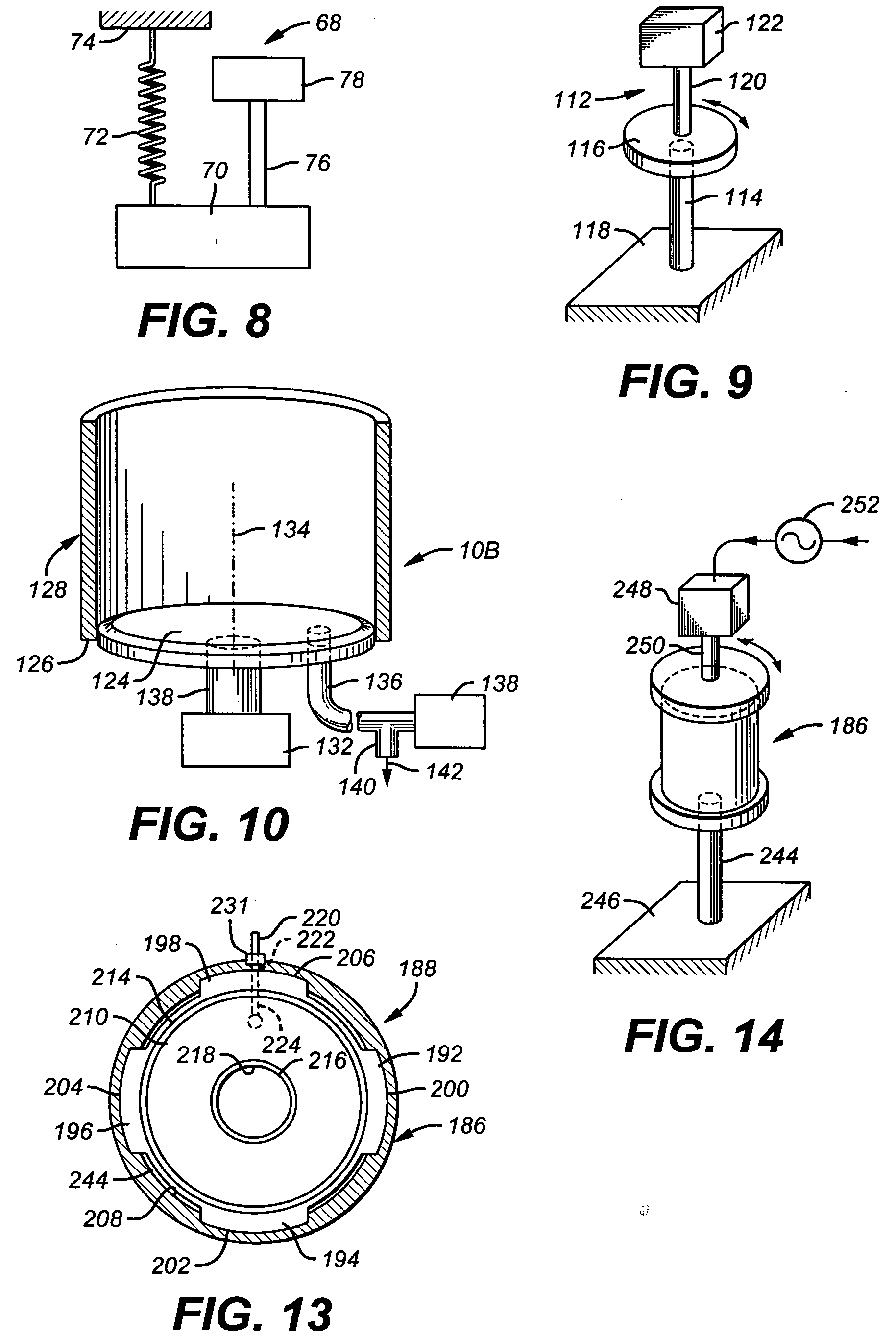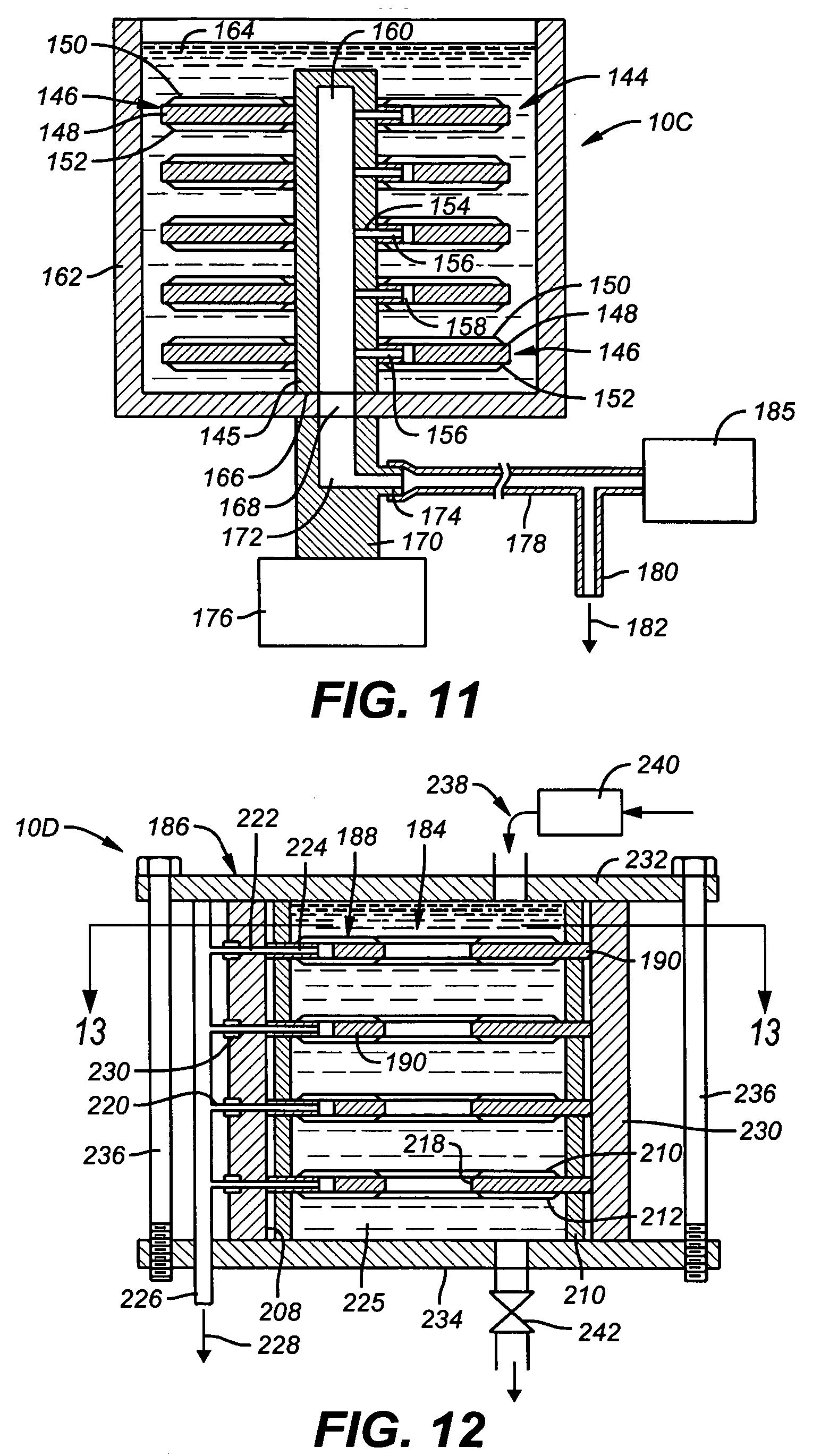Methods for removing metals from water
a technology of metals and water, applied in the field of methods and equipment for separating metals, can solve the problems of affecting the separation of metal components affecting the separation the filter membrane plugging or fouling problem, etc., to achieve the effect of improving the filtering rate of colloidal suspensions or solutions, increasing the concentration of selected metal components
- Summary
- Abstract
- Description
- Claims
- Application Information
AI Technical Summary
Benefits of technology
Problems solved by technology
Method used
Image
Examples
example 1
[0072] From the schematic flow diagram of FIG. 15, it may be seen that refinery water 300 having a pH of 9.5 and 3.5 ppm selenium with 2000 ppm O&G under a pressure of 500 psi (3.4 MPa) and at a temperature of 65° C. may be fed at a feed rate of 10-110 gpm (38-416 liters / min.) to an I-84 model Vibratory Shear Enhanced Processing (VSEP®) module from New Logic Research, Inc. As shown in FIG. 15, the refinery water first encounters a reverse osmosis-type membrane 302 in accordance with this invention and a stream of purified water 304 having about 0.020 ppm Se is removed. The fluid 306 then has 1500 to 2000 ppm of a metal precipitator 308 (e.g. copper sulfate) added thereto and the fluid 306 is treated at a flow rate of about 8-107 gpm (30405 μm) through a nano filtration-type membrane 310. Purified water 312 having about 0.5 to about 1.0 ppm Se and about 0.5 to 1.0 ppm Cu at a flow rate of about 2-3 gpm (7.6-11 lpm) is removed and sent to a waste treatment plant or recycled to the VSE...
example 2
[0073] Shown in FIG. 16 is a VSEP Selenium Process Flow Diagram. It should be noted that the selenium numbers reported are the average of actual data. Based on this Example and 145 gpm (549 liters / minute or lpm) flow rate, approximately 0.8 pounds (0.36 kg) of Se / day were removed. The Se removal process is generally referred to in FIG. 16 as 400, where SSW (Stripped Sour Water) Feed 402 at a flow rate of 145 gpm (549 lpm) containing about 0.5 ppm Se was heated in heat exchanger 404 to 140° F. (60° C.). Line 406 injected 50% NaOH at 204 gpd (772 liters / day or lpd) as a metal precipitator prior to mixer 408 from which exited stream 410 to 450 bbl (54 kiloliter) tank 412 where the contents had a pH of 11.0 to 11.5. Oil was skimmed from tank 412 via line 414.
[0074] Exit line 416 has 38% ethylenediaminetetracetic acid (EDTA) introduced into it via line 418 at a rate of 186 gpd (704 lpd) and 40% linear alkyl benzene sulfonate (LABS or sodium dodecylbenzenesulfonate) injected into it via ...
example 3
[0076] Shown in FIG. 17 is another embodiment of a SSW VSEP Selenium System Design. The selenium balance was calculated using VSEP data results. The Se removal process is generally referred to in FIG. 16 as 500, where SSW Feed 502 at a flow rate of 700 gpm (2.6 kiloliters / min) containing an average concentration of about 0.5 ppm Se was treated with a 50% NaOH metal precipitator solution 504 to give a pH between 10.0-11.0 prior to injection into a 1000 bbl (119 kiloliter) tank 506. Oil was skimmed from tank 506 via line 508.
[0077] Exit line 510 was treated with 38% EDTA introduced via line 512 and 40% LABS injected via line 514 prior to heat exchanger 516 which heated the SSW to 140° F. (60° C.) prior to pump 518 that introduced the stream into first stage VSEP module 520 that operated at 80% recovery giving 98.4% Se recovery. First stage 520 included 13 I-84 model VSEP® modules from New Logic Research, Inc. First stage permeate stream 522 containing an average Se concentration of 0...
PUM
| Property | Measurement | Unit |
|---|---|---|
| Temperature | aaaaa | aaaaa |
| Temperature | aaaaa | aaaaa |
| Fraction | aaaaa | aaaaa |
Abstract
Description
Claims
Application Information
 Login to View More
Login to View More - R&D
- Intellectual Property
- Life Sciences
- Materials
- Tech Scout
- Unparalleled Data Quality
- Higher Quality Content
- 60% Fewer Hallucinations
Browse by: Latest US Patents, China's latest patents, Technical Efficacy Thesaurus, Application Domain, Technology Topic, Popular Technical Reports.
© 2025 PatSnap. All rights reserved.Legal|Privacy policy|Modern Slavery Act Transparency Statement|Sitemap|About US| Contact US: help@patsnap.com



